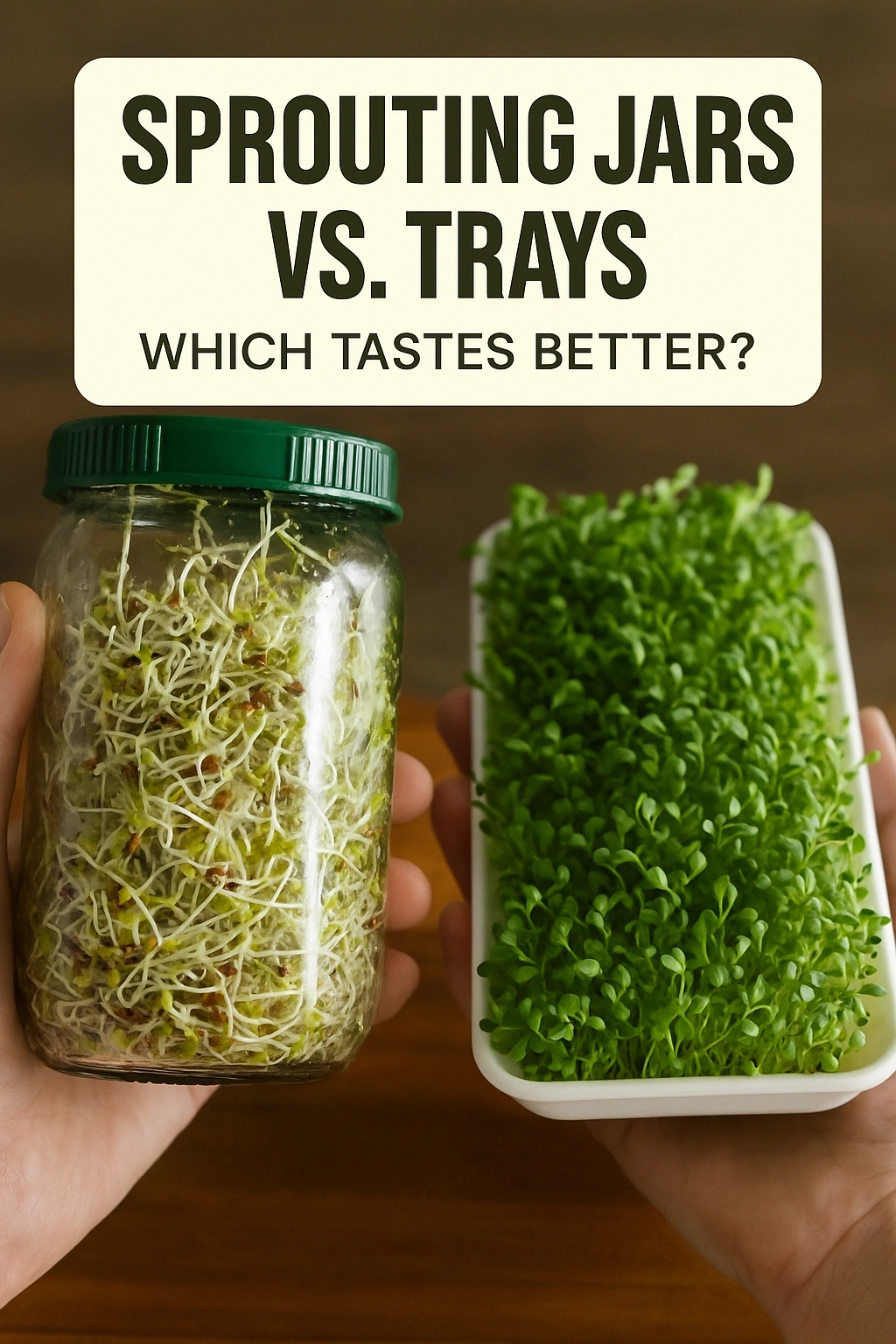
When it comes to growing nutritious sprouts at home, the method you choose can significantly impact the flavor and texture of your sprouts. The debate between using sprouting jars or trays is ongoing among enthusiasts. Many wonder which method yields tastier sprouts. This article will delve into the differences between these two techniques, exploring their advantages and disadvantages, and ultimately guiding you to the best choice for your palate.
Understanding Sprouting Methods
Sprouting is the process of germinating seeds, which results in fresh, nutrient-packed sprouts. The two primary methods for sprouting at home are jars and trays. Each method has its own set of characteristics that can affect the final flavor and quality of the sprouts.
The Sprouting Jar Method
Sprouting jars are typically glass containers that allow for easy rinsing and drainage of seeds. This method is favored for its simplicity and efficiency, particularly for small quantities of sprouts. The jar acts as a mini greenhouse, creating an ideal environment for germination.
Advantages of Using Jars
- Controlled Environment: Jars provide a stable environment with less exposure to contaminants.
- Easy Monitoring: The transparent nature of glass allows you to easily observe the growth process.
- Space-Efficient: Jars take up less horizontal space, making them ideal for small kitchens.
Disadvantages of Using Jars
- Limited Quantity: Jars are typically suited for smaller batches of sprouts.
- Rinsing Difficulty: Rinsing can be tricky, as seeds may clump together or not drain well.
The Tray Sprouting Method
Tray sprouting involves using shallow trays filled with a growing medium, such as soil or coconut coir. This method is often employed for larger quantities of sprouts and microgreens, allowing for more extensive growth.
Advantages of Using Trays
- Higher Yield: Trays can accommodate a larger number of seeds at once, making them ideal for bulk sprouting.
- Versatility: Trays can be used for various types of sprouts and microgreens, providing a diverse range of flavors.
- Better Air Circulation: The open design allows for improved airflow, reducing the risk of mold.
Disadvantages of Using Trays
- Space Requirements: Trays require more countertop space, which may be a limitation in smaller kitchens.
- More Maintenance: Trays may require more frequent watering and monitoring compared to jars.
Flavor Comparison: Jars vs. Trays
The ultimate question for many sprouting enthusiasts is: which method produces better-tasting sprouts? The answer can vary depending on personal preference and the specific type of sprouts being grown.
Factors Influencing Flavor
- Type of Sprout: Different seeds have unique flavor profiles. For instance, radish sprouts tend to be spicier, while pea shoots are sweeter.
- Growing Conditions: Light, temperature, and humidity can all influence taste. Trays may provide better conditions for some types of sprouts.
- Water Quality: The quality of water used in sprouting can impact flavor. Filtered water is often recommended.
Personal Taste Preferences
Ultimately, personal taste plays a significant role. Some individuals prefer the crunch and freshness of jar-grown sprouts, while others enjoy the fuller flavors and textures achieved with tray-grown varieties. Experimenting with both methods can provide insight into which suits your palate best.
Practical Tips for Successful Sprouting
Regardless of the method chosen, there are several best practices to ensure successful sprouting. Following these tips can enhance the flavor and overall quality of your sprouts.
Choosing Quality Seeds
Invest in high-quality, organic seeds from reputable suppliers. This can lead to better germination rates and more flavorful sprouts.
Maintaining Cleanliness
Cleanliness is crucial to prevent mold and bacteria. Always sterilize your jars and trays before use and rinse seeds thoroughly.
Monitoring Growth Conditions
Keep an eye on temperature and humidity levels. Ideal conditions vary by type of sprout but generally fall within a range of 60-75°F (15-24°C) with moderate humidity.
FAQs on Sprouting Jars vs. Trays
Which method is easier for beginners?
Sprouting jars are generally easier for beginners due to their simplicity and lower maintenance requirements. They allow for easier observation of the growth process.
Can I grow all types of sprouts in both jars and trays?
While many sprouts can be grown in both methods, some varieties, like larger microgreens, may perform better in trays due to their space and light requirements.
Is there a significant taste difference between jar and tray sprouts?
There can be a taste difference influenced by growing conditions and the type of sprout. Experimenting with both methods can help you discover your preference.
How long does it take to grow sprouts using each method?
Generally, sprouts can be ready in 3 to 7 days, depending on the type of seed and method used. Jars may yield slightly faster results due to controlled conditions.
Is it safe to eat sprouts?
While sprouts are nutritious, they can pose a risk of bacterial contamination. Ensure proper hygiene and follow safe sprouting practices to minimize risks.
Conclusion: Making the Right Choice for Your Taste
Choosing between sprouting jars and trays ultimately comes down to personal preference, available space, and desired yield. Both methods have unique benefits and can produce delicious, nutritious sprouts. By considering your specific needs and experimenting with both methods, you can enjoy the freshest and tastiest sprouts possible.
